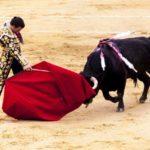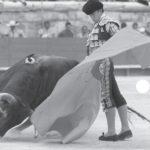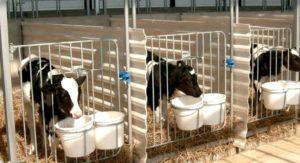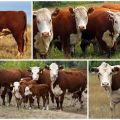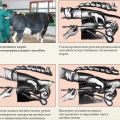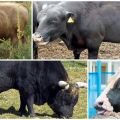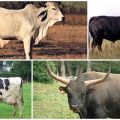Do cows and bulls distinguish colors and how their eyes are arranged, are they color blind
A cow is an animal familiar to most people. In the village at my grandmother's, many gently stroked the cow's face, knowing that she could get scared and jerk sharply for no reason at all. And sometimes a cow gazes intently at an object nearby. To understand the mechanism of this behavior, you need to know how the animal sees the world, and whether bulls distinguish basic colors in the same way as humans.
How the bull's eye works
The cow's organ of vision is in many ways similar to other mammals. It is located in the orbit of the skull. Consists of a shell, lens and vitreous body. The bull's eyeball connects to the brain via the optic nerve.
There are three layers of the shell:
- The outer consists of the cornea and sclera. Muscles and tendons are attached to it, which make the eye move. The transparent cornea conducts light reflected from objects inward. She is very sensitive to pain and pressure due to the large number of nerve endings and the absence of blood vessels.
- The middle part includes the iris, ciliary body and circulatory system. The iris acts as a lens, directing light. It also contains a color pigment that colors the eye. In cows, shades of brown prevail. In the center of the iris is the pupil. The vascular mesh is responsible for feeding the organ and is located between the retina and the sclera. The ciliary body controls the curvature of the lens, regulates heat transfer.
- The retina (inner layer) processes light and converts it into an information impulse that goes to the brain. The vitreous body is located in front of it. It keeps the eye toned. This is where the rods and cones are located. The first help to navigate during the day. The latter provide color vision.
Outside, the cow's ocular apparatus is protected by the eyelids, covered from the inside by the conjunctival mucosa. In the inner corner there is a blinking membrane.

The bull's organ of vision is protected from infections and debris by tears, which contain the enzyme lysozyme. Well, lush eyelashes save from insects and thorny plants.
Features of visual perception
The lens of the eye in cows is adapted so that they clearly distinguish objects at a distance of up to 3 meters from themselves, but further they begin to blur. That is why bulls look at one point for a long time. There is a "blind spot" in the area in front of the nose. However, neither congenital myopia, nor this, in any way interfere with the ungulate in life.
These mammals see everything on a larger scale at close range. And the approaching child, shepherd, milkmaid will be perceived as something threatening. The bull can see in the dark. Weak light inside the eye is reflected from the retina and amplifies 5-10 times. This allows the buffalo to spot predators hunting at night. If you point a flashlight at a cow, her pupils will glow white or yellow.
Do cows distinguish colors
It is a common misconception that bulls suffer from color blindness. Mammals are considered color blind if they are unable to visually sense one or more colors. But more often this term is called a person who does not see red shades.
Members of the bovine family recognize a palette of colors necessary for normal functioning: green, yellow, blue, red, black and white. But their saturation is so low that for the bull they merge into a single color. A cow has only 2 color receptors (humans have 3). Due to this characteristic, cattle are susceptible to shades of blue and yellow-green spectrum. They do not distinguish between red. But this fact does not make the bulls color blind.
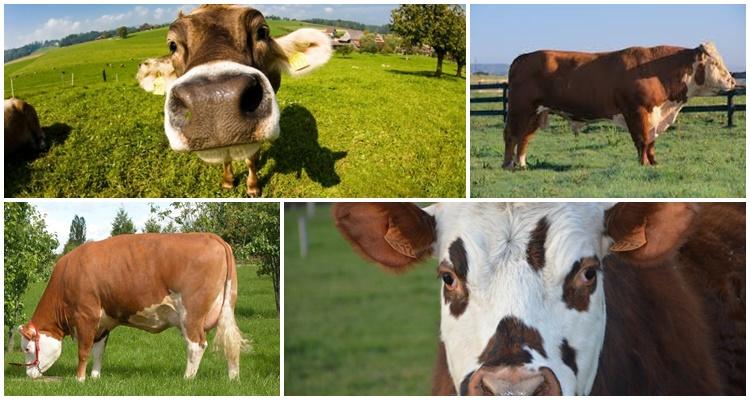
Why is it believed that bulls don't like red?
"Acts like a red rag on a bull" is a familiar expression, isn't it? This myth arose from the popularity of the Spanish bullfighting, where brave bullfighters fought angry horned rivals using a scarlet muleta. This fact has long been refuted by scientists.
The bull's aggressive behavior is not at all associated with red matter. The beast reacts to her movement and perceives it as an enemy or obstacle. Since the fighter stands at least 5 meters away, the bull does not see the clear outlines of the enemy and attacks the first moving object.
In addition, bulls are specially raised and trained for bullfighting. And on the eve of the performance itself, they deliberately do not feed in order to increase aggression.
Such an explosive mixture makes one believe that an angry beast rushes exactly to a crimson barrier. Although in reality it can be of any color, it was made red to make the fight more spectacular, to attract the attention of the audience and to demonstrate the intensity of passion.

